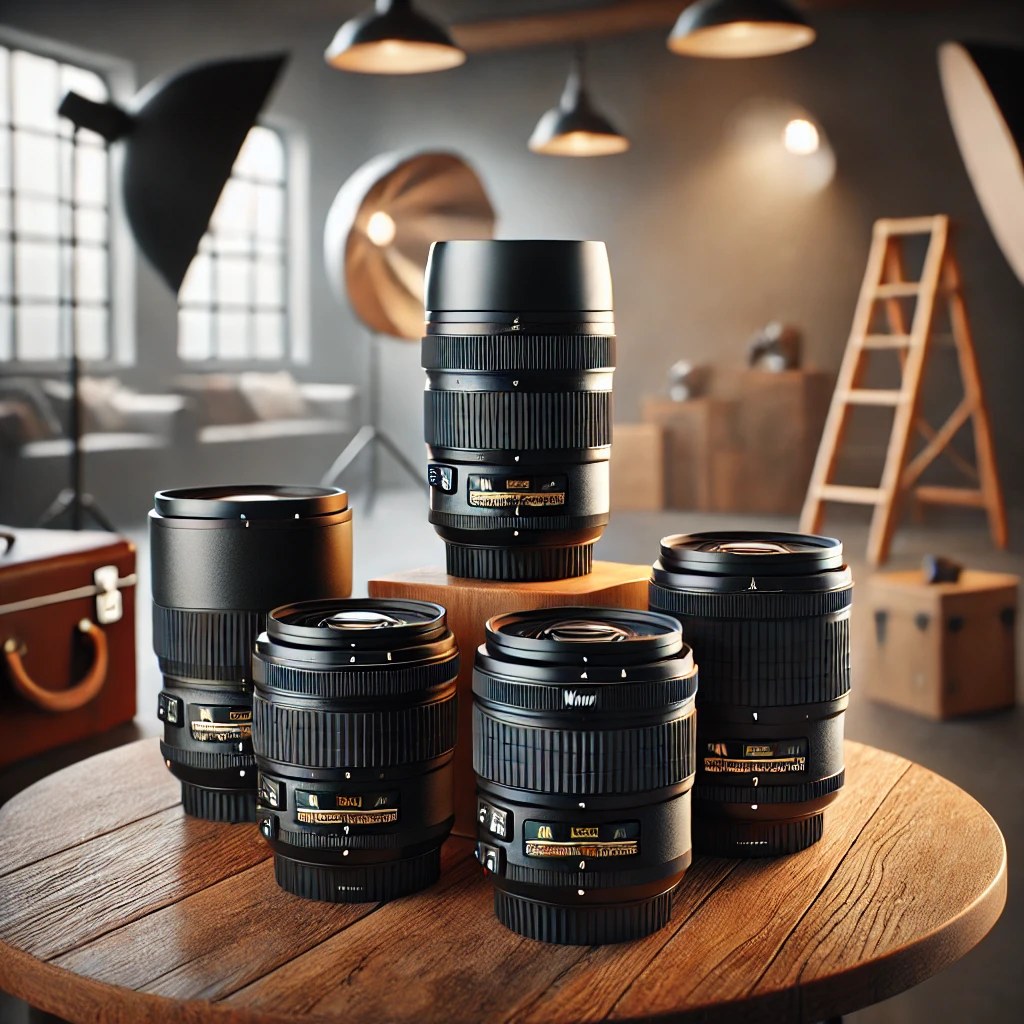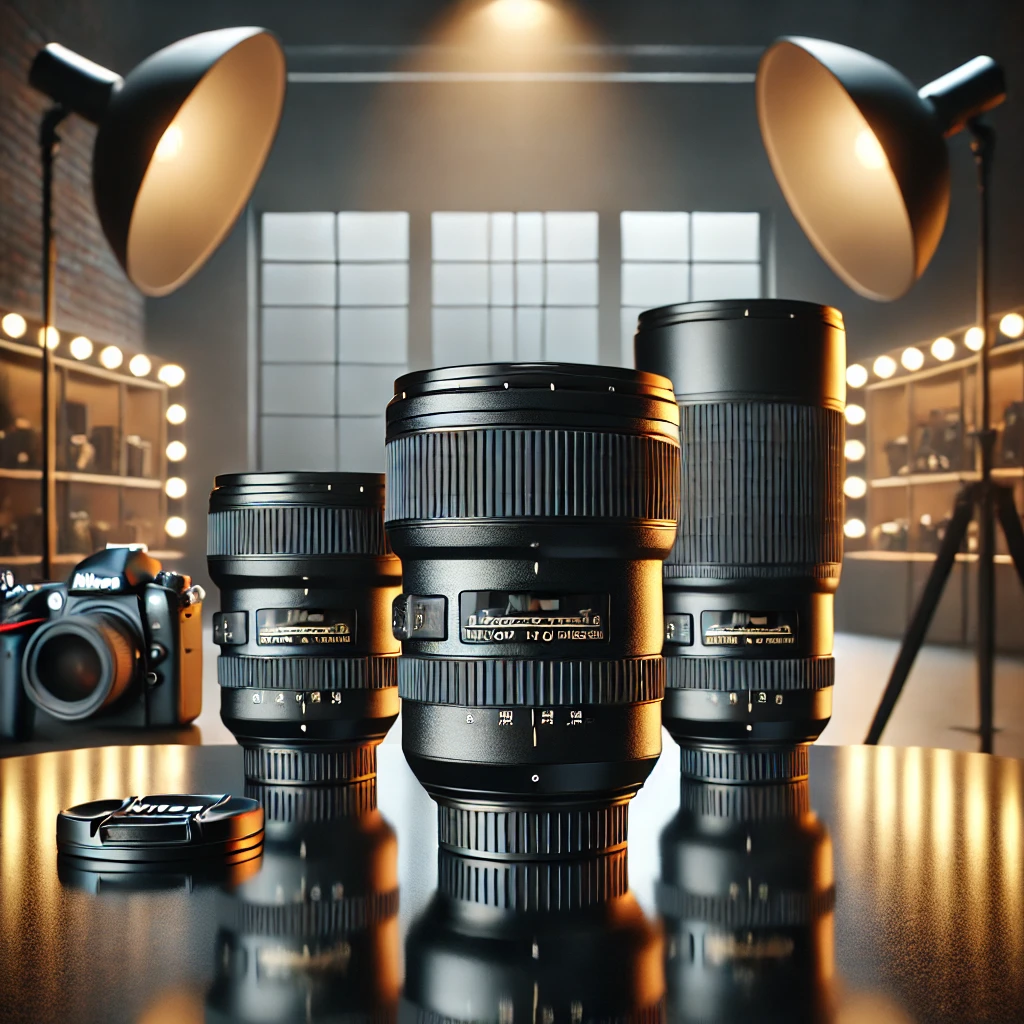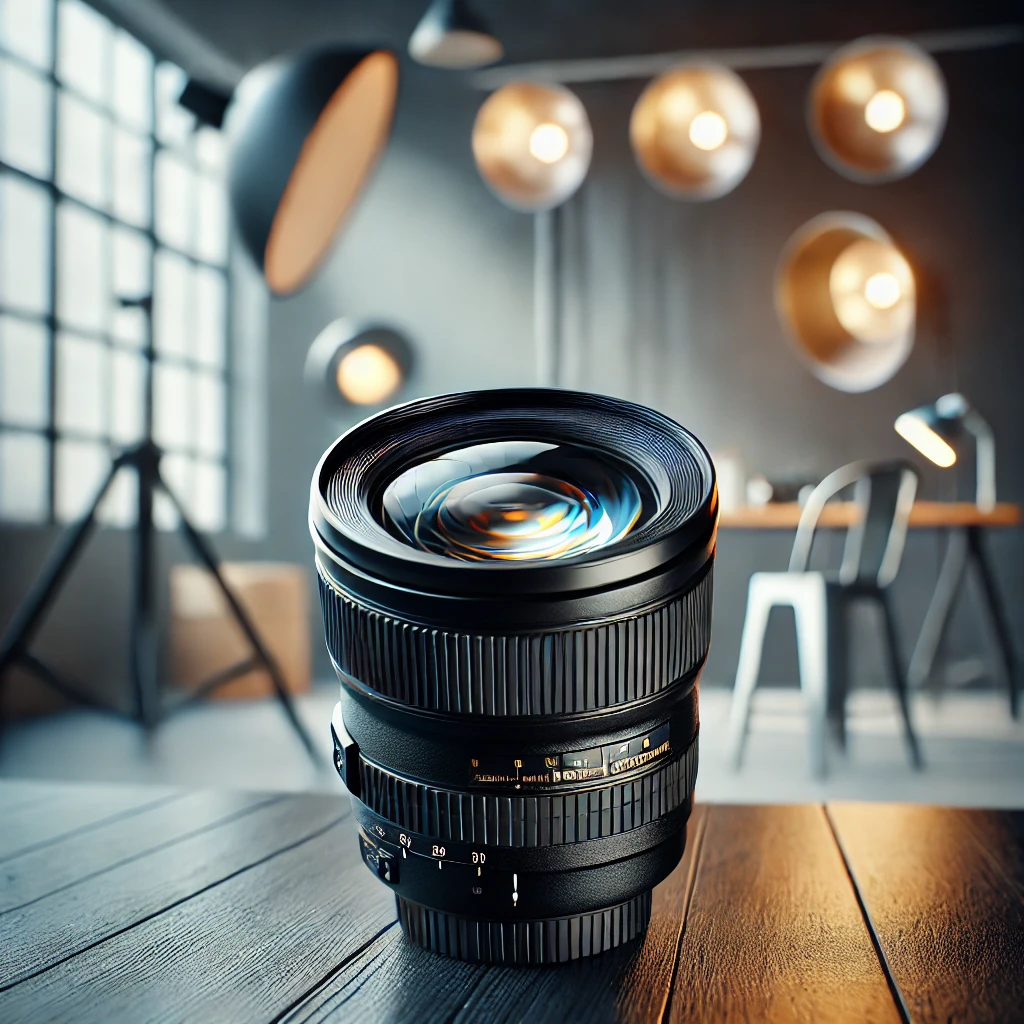Introduction
Finding the Best Nikon Indoor Lens for photography can be a game-changer for photographers aiming to capture stunning images in challenging lighting conditions. Indoor settings often present unique obstacles, such as limited natural light, tight spaces, and varying subject distances. The right lens not only addresses these challenges but also enhances your creative potential, enabling you to capture sharp, vibrant, and professional-quality photos. Whether you’re shooting portraits, events, or indoor architecture, choosing the best lens tailored to your needs is essential for achieving exceptional results.
Nikon offers a range of high-performance lenses that excel in indoor photography, each designed to cater to different shooting scenarios. From fast prime lenses that deliver excellent low-light performance to versatile zoom lenses capable of adapting to dynamic environments, Nikon has a solution for every photographer. Investing in a lens with a wide aperture, sharp optics, and reliable autofocus can elevate your indoor shots, making your subjects stand out even in dim or uneven lighting. Let’s explore some of the top Nikon lenses that combine precision, functionality, and innovation to help you capture unforgettable indoor photographs.
Understanding Indoor Photography Challenges

A. Low light conditions
Indoor photography often presents challenges due to insufficient lighting. Low light conditions can lead to issues such as:
- Increased image noise
- Motion blur
- Difficulty achieving proper exposure
To combat these challenges, photographers need to adjust their camera settings accordingly. Here’s a quick reference table for recommended settings in low light situations:
| Setting | Recommendation |
|---|---|
| ISO | 800 to 3200 |
| Aperture | f/2.8 to f/4 |
| Shutter Speed | At least 1/60th of a second |
Using a wider aperture not only allows more light into the sensor but also creates a shallow depth of field, which can be particularly useful for indoor portrait photography. Additionally, employing a tripod can help mitigate camera shake when using slower shutter speeds.
B. Limited space
Indoor environments often come with space constraints, which can impact composition and lens choice. When dealing with limited space:
- Consider using wide-angle lenses to capture more of the scene
- Utilize creative angles and perspectives to make the most of the available space
- Pay attention to background elements, as they may be more prominent in tight spaces
C. Mixed lighting sources
One of the most complex challenges in indoor photography is dealing with multiple light sources, each potentially having different color temperatures. This can result in:
- Uneven lighting across the subject
- Color casts that affect skin tones and overall image appearance
- Difficulty in achieving accurate white balance
To address mixed lighting issues:
- Use Auto White Balance (AWB) as a starting point
- Experiment with preset white balance options like Daylight, Cloudy, or Tungsten
- Consider using a gray card for more precise color correction
- Employ reflectors or diffusers to even out lighting and soften harsh shadows
It’s crucial to test different settings and techniques to find the optimal solution for each unique indoor lighting scenario.
Key Features for Indoor Nikon Lenses
Understanding these features will help you choose the best lens for your indoor shooting needs.
A. Wide aperture for better light gathering
A wide aperture is crucial for indoor photography, allowing more light to reach the camera sensor. Nikon lenses with apertures of f/1.8 or wider are ideal for low-light conditions. For instance:
- The Nikon Nikkor 50mm f/1.4G offers a fast f/1.4 maximum aperture
- The Nikon Nikkor AF-S 85mm f/1.8G provides excellent light-gathering capabilities
- The Sigma 35mm f/1.4 DG HSM Art lens boasts a very fast aperture
B. Fast autofocus performance
Quick and accurate autofocus is essential for capturing sharp images in challenging indoor lighting. Many Nikon lenses feature advanced autofocus systems:
- Silent Wave Motor (SWM) technology in lenses like the Nikon Nikkor 50mm f/1.4G ensures swift and quiet autofocus
- Sigma lenses, such as the 18-35mm f/1.8 DC HSM Art, offer superior autofocus performance
C. Image stabilization
Image stabilization helps combat camera shake, which is especially important in low-light situations where slower shutter speeds are often necessary. Some Nikon lenses incorporate Vibration Reduction (VR) technology to enhance image sharpness.
D. Versatile focal length range
While prime lenses excel in low light, zoom lenses offer flexibility for various indoor shooting scenarios. Here’s a comparison of some versatile Nikon lenses:
| Lens | Focal Length Range | Maximum Aperture | Best For |
|---|---|---|---|
| Nikkor 55-200mm f/4-5.6G ED | 55-200mm | f/4-5.6 | Versatile indoor shooting |
| Sigma 18-35mm f/1.8 DC HSM Art | 18-35mm | f/1.8 | Wide-angle to normal range |
| Tamron SP 15-30mm f/2.8 Di VC USD | 15-30mm | f/2.8 | Ultra-wide angle indoor scenes |
These features work together to enhance your indoor photography experience. A lens with a wide aperture and fast autofocus will help you capture sharp images in low light, while image stabilization allows for slower shutter speeds without introducing blur. The versatile focal length range gives you the flexibility to adapt to various indoor environments.
Top Nikon Prime Lenses for Indoor Photography

Prime lenses, with their fixed focal lengths and wider apertures, are often preferred for indoor shooting due to their superior low-light performance and image quality.
A. Nikon 50mm f/1.8G
The Nikon 50mm f/1.8G is a versatile prime lens that offers exceptional value for indoor photographers. Known for its:
- Exceptional sharpness
- Great price-to-performance ratio
- Fast f/1.8 aperture for low-light shooting
This lens is ideal for portraits and general indoor photography, delivering beautiful bokeh and natural-looking images.
B. Nikon 85mm f/1.8G
For those focusing on portrait photography indoors, the Nikon 85mm f/1.8G is an excellent choice. Key features include:
- Minimal distortion for natural close-ups
- Outstanding bokeh for subject isolation
- Excellent sharpness, even in low light
This lens is particularly valued for its ability to create flattering portraits with smooth background blur.
C. Nikon 35mm f/1.8G
The Nikon 35mm f/1.8G offers a wider angle of view, making it suitable for various indoor shooting scenarios:
- Ideal for group shots and environmental portraits
- Performs well in low light conditions
- Versatile focal length for general indoor use
While it may not be the best for individual portraits, its wider perspective is perfect for capturing indoor events and spaces.
D. Nikon 24mm f/1.4G
For those needing an even wider angle in indoor settings, the Nikon 24mm f/1.4G is a top performer:
- Excellent for capturing wide indoor spaces
- Superior low-light performance with f/1.4 aperture
- Minimal distortion for architectural interiors
This lens excels in creating dramatic compositions and is particularly useful for real estate and interior design photography.
| Lens | Focal Length | Max Aperture | Best For |
|---|---|---|---|
| 50mm f/1.8G | 50mm | f/1.8 | General indoor, portraits |
| 85mm f/1.8G | 85mm | f/1.8 | Portraits, close-ups |
| 35mm f/1.8G | 35mm | f/1.8 | Group shots, events |
| 24mm f/1.4G | 24mm | f/1.4 | Wide interiors, architecture |
These prime lenses offer excellent image quality and low-light performance, making them ideal choices for indoor photography. However, their fixed focal lengths may require more movement from the photographer to frame shots.
Best Nikon Zoom Lenses for Indoor Use

Prime lenses offer exceptional image quality and low-light performance, zoom lenses provide versatility that can be crucial in dynamic indoor environments.
A. Nikon 24-70mm f/2.8G
The Nikon 24-70mm f/2.8G is a versatile zoom lens that’s well-suited for indoor photography. Its constant f/2.8 aperture allows for excellent low-light performance, making it ideal for various indoor scenarios. This lens is particularly useful for:
- Event photography
- Indoor portraits
- Architectural shots
Its wide-to-medium zoom range covers most indoor shooting situations, from wide-angle room shots to tighter compositions.
B. Nikon 70-200mm f/2.8G
The Nikon 70-200mm f/2.8G is a professional-grade telephoto zoom lens that excels in indoor settings, especially for:
- Indoor sports photography
- Stage performances
- Product photography
This lens is noted for its:
- Robust zoom capability
- Excellent performance in capturing sharp, noise-free telephoto images
- Ability to create beautiful bokeh effects
While it may have a heavier front end, its performance in low-light conditions makes it a top choice for indoor photographers who need to maintain distance from their subjects.
C. Nikon 14-24mm f/2.8G
For those needing an ultra-wide angle lens for indoor use, the Nikon 14-24mm f/2.8G is an excellent option. This lens is particularly useful for:
- Real estate photography
- Indoor landscapes
- Architectural interiors
| Feature | Benefit |
|---|---|
| Ultra-wide angle | Captures expansive indoor spaces |
| Constant f/2.8 aperture | Performs well in low-light conditions |
| Sharp image quality | Delivers crisp details across the frame |
When choosing between these zoom lenses, consider the specific requirements of your indoor shoots. The 24-70mm offers versatility, the 70-200mm excels in telephoto applications, and the 14-24mm is unmatched for ultra-wide shots.
Factors to Consider When Choosing an Indoor Lens
A. Budget constraints
When choosing a Nikon lens for indoor photography, your budget plays a significant role. While high-end lenses like the Nikon 70-200mm f/2.8G ED-IF AF-S offer exceptional performance, they come with a hefty price tag. However, there are excellent options for various budgets:
| Price Range | Recommended Lens |
|---|---|
| Budget | Nikon AF-S DX NIKKOR 35mm f/1.8G |
| Mid-range | Nikon AF-S FX NIKKOR 50mm f/1.8G |
| High-end | NIKKOR Z 24-120mm f/4 S |
B. Specific indoor photography needs
Different indoor scenarios require different lens characteristics:
- For portraits: Prime lenses like the 50mm f/1.8G offer excellent sharpness and bokeh
- For events: Versatile zoom lenses such as the 24-70mm f/2.8 provide flexibility
- For low-light conditions: Fast prime lenses like the 20mm f/1.8 excel
C. Camera body compatibility
Ensure your chosen lens is compatible with your camera body:
- FX lenses: Suitable for full-frame Nikon cameras
- DX lenses: Designed for crop-sensor Nikon DSLRs
- Z-mount lenses: Specifically for Nikon mirrorless cameras
D. Weight and size considerations
The weight and size of your lens can significantly impact your indoor shooting experience:
- Lightweight options: Nikon Z 40mm f/2 or Nikon AF-S DX NIKKOR 35mm f/1.8G
- Compact choices: Nikon AF-S FX NIKKOR 50mm f/1.8G
- Larger, professional-grade lenses: Nikon 70-200mm f/2.8G ED-IF AF-S
Remember to balance your specific needs with the lens’s physical characteristics to ensure comfortable handling during extended indoor shoots.
Maximizing Your Indoor Lens Performance
Maximizing the performance of your indoor camera lens is essential for capturing stunning, high-quality images in various indoor settings. Lighting plays a pivotal role in achieving this goal. Since natural light is often limited indoors, it’s vital to optimize the available artificial light or incorporate external sources, such as LED panels or ring lights, to enhance image clarity. Experimenting with the camera’s ISO, aperture, and shutter speed settings can significantly improve your shots. A higher ISO can brighten your image in low-light conditions, though balancing it to avoid noise is crucial. Wide apertures, such as f/1.8 or f/2.8, allow more light to enter the lens, creating beautiful depth-of-field effects that are perfect for indoor portraits.
Using a tripod can also elevate your indoor photography game. It stabilizes the camera, particularly in scenarios where slower shutter speeds are necessary. This helps prevent blurriness caused by hand movements and ensures crisp, professional-looking images. Furthermore, consider the placement of your subject in relation to the available light sources. Positioning your subject near windows or lamps can dramatically improve the lighting and overall composition of your photographs.
The choice of lens is another critical factor. Prime lenses with wide apertures, such as a 50mm f/1.8, are often preferred for indoor photography due to their ability to perform well in low-light conditions and produce sharp images. If you’re working in tighter spaces, wide-angle lenses can capture more of the scene while maintaining excellent clarity.

1 thought on “Best Nikon Indoor Lens For Stunning Photography: A 2025 Guide”